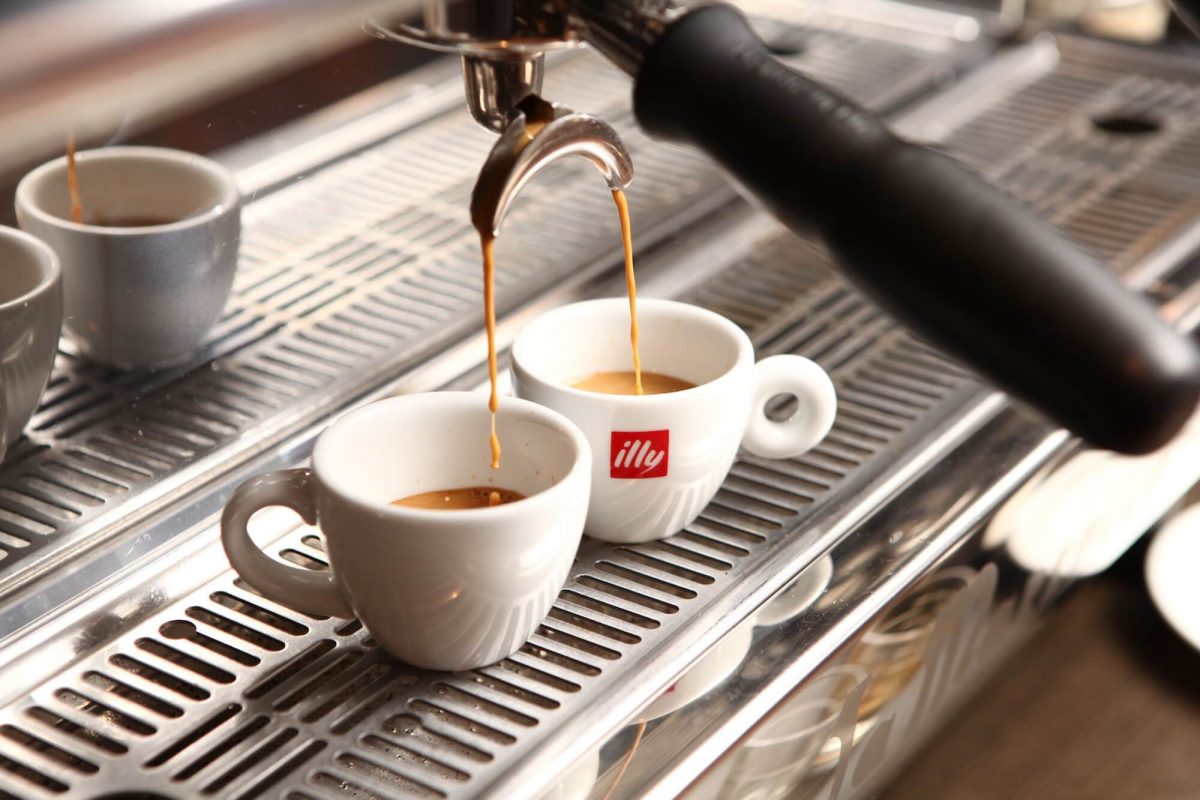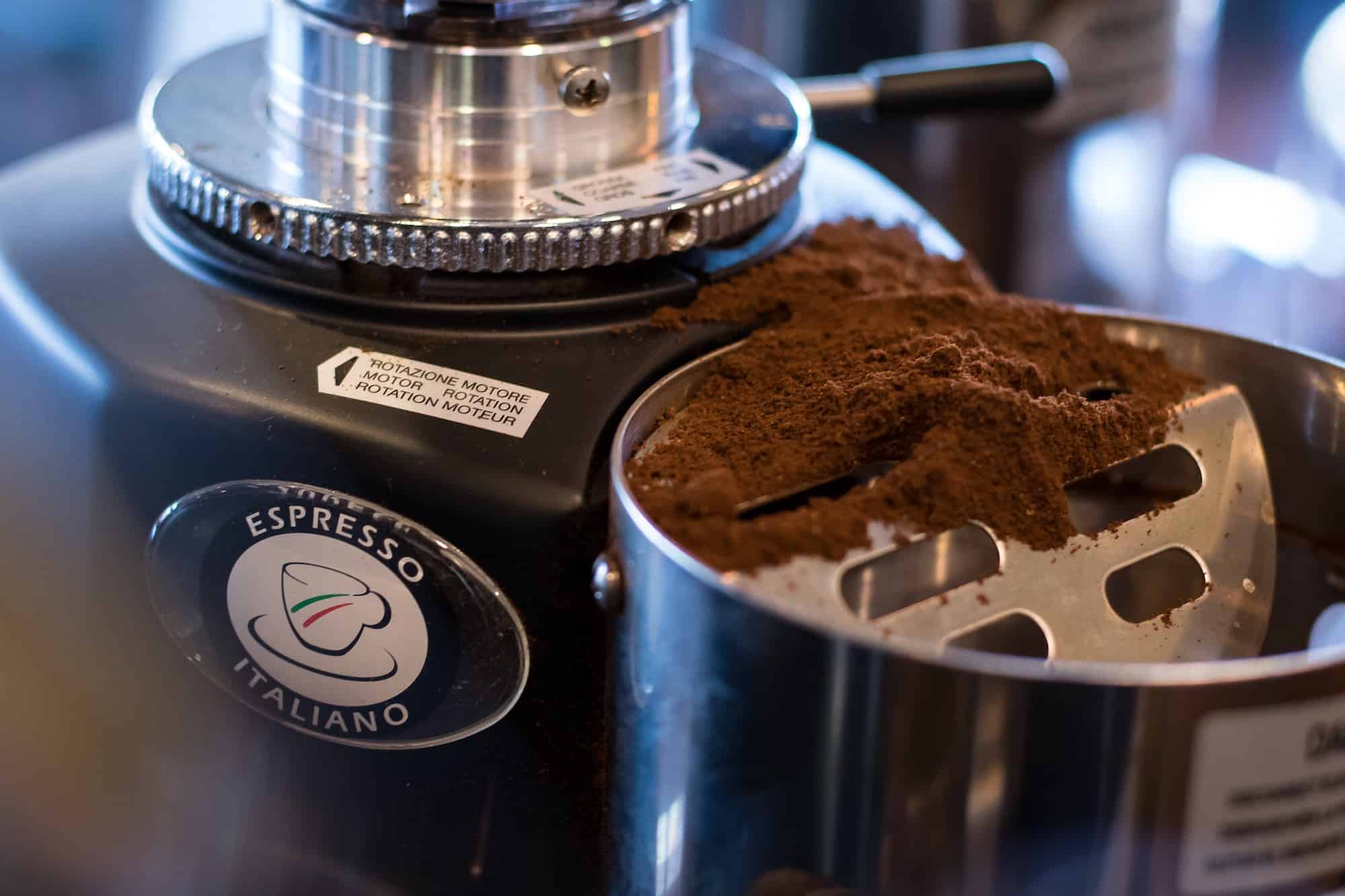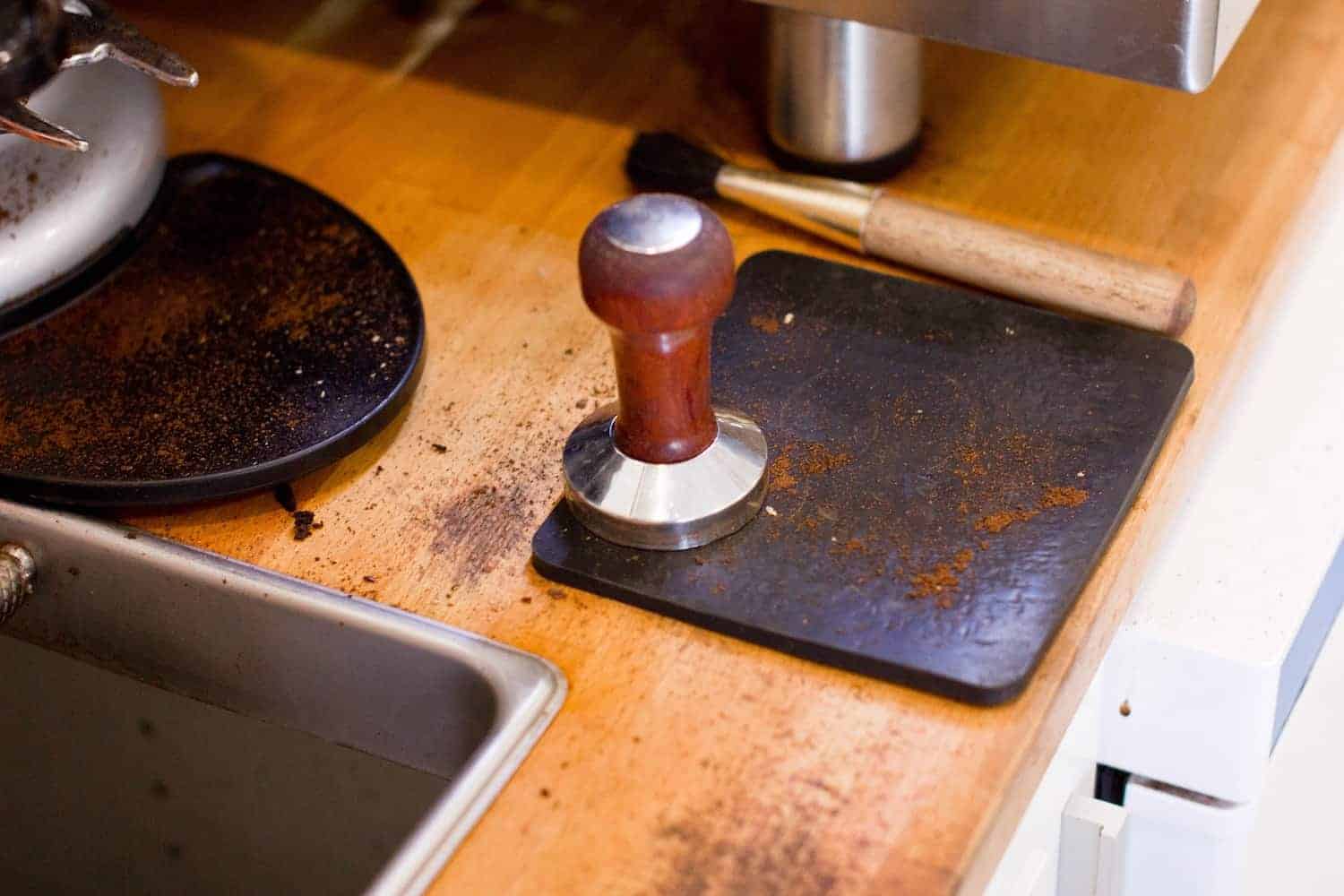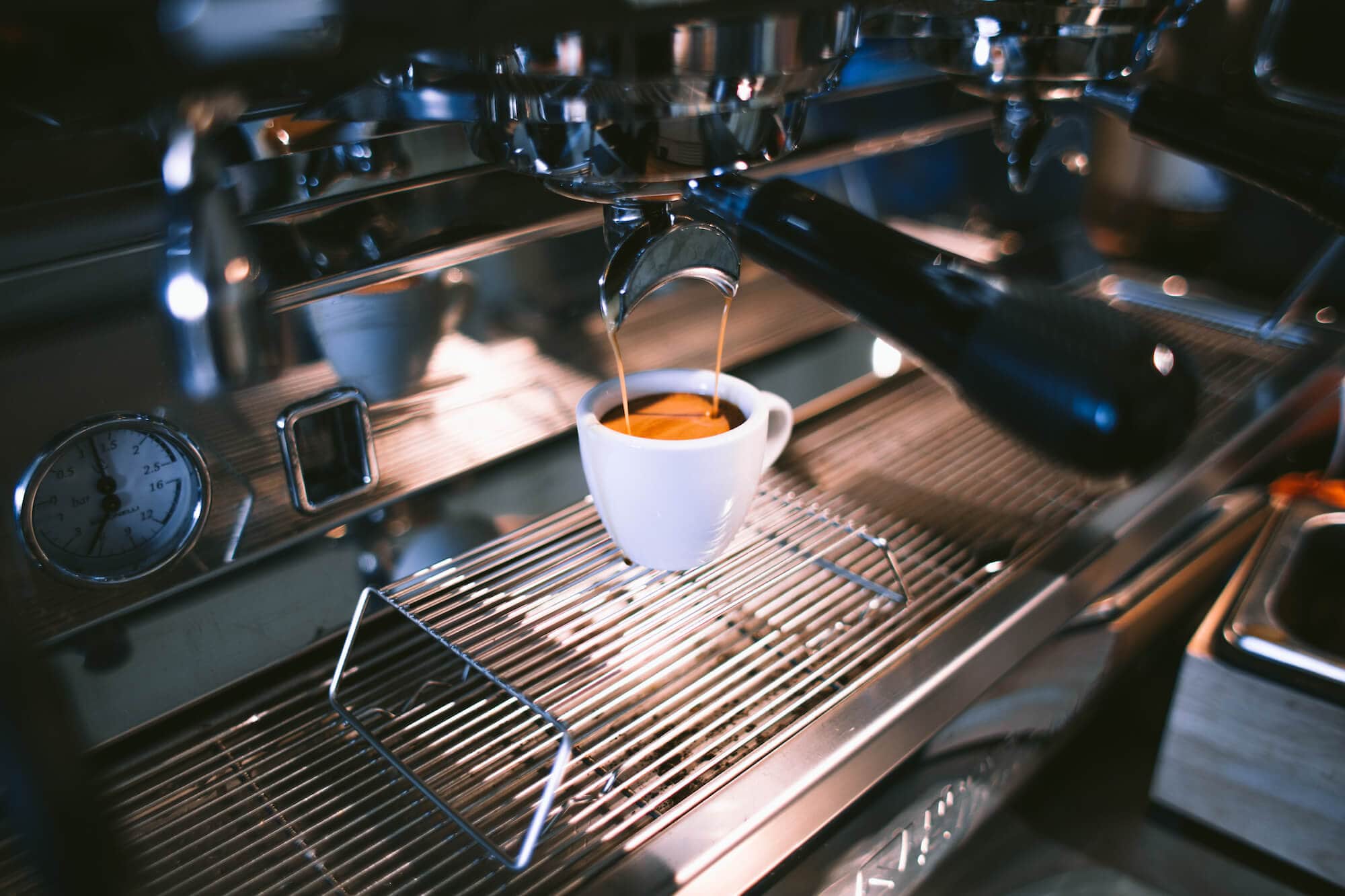What is Espresso and Why is it Different from Brewed Coffee?

Do you ever head to your local Starbucks, get inside, and wonder what all those tiny ceramic cups are for? Do you feel like you are missing something?
Fret no more! The simple answer is: in those tiny cups are shots of what is basically concentrated coffee: espresso.
Espresso is not really much different from the coffee you buy from the store before you brew it. The difference comes in how exactly it is brewed.
At the most basic level, espresso is a “shot” of coffee that is “pulled” by forcing pressurized water through a tightly packed bed of coffee. This results in a very rich and flavorful coffee. Additionally, the brewing process combines air bubbles with the soluble oils in the coffee creating the “crema”, a rich foam on top of the shot.
How to Drink Espresso
Due to the richer, stronger and more pronounced flavors of espresso, it really is something which must be sipped and savored.
If you were to want to try a “plain” espresso, you would simply order a single shot. But, you could also get a “doppio”, or a double shot. Further, espresso is used in many drinks you are already familiar with like mochas, lattes, cappuccinos, etc.
When drinking espresso straight, if you will, you will receive the shot in a small demitasse cup with a coaster. The light tan crema will be sitting on top of the shot itself.
You may also receive a small spoon and sparkling water. These are meant to improve your experience of drinking the espresso – mix the shot with the spoon, sip the sparkling water in between sips of the espresso.
The Espresso Brewing Process
The perfect espresso shot can only be pulled when there is a definite connection between man, machine, process.
That is, once a bean makes it way to the shop, the barista must understand the interaction between themselves and the espresso machine and how each step in the process will affect the resulting beverage.
As we know, espresso is made by pulling pressurized water through a tightly packed bed of coffee. Each step in this process has a profound impact on the espresso shot. Paying attention to process is just as important as being a well-taught barista or having a well-made espresso machine.
Grinding
The first step in the espresso brewing process is grinding the bean. the best way to get the most coffee into the espresso machine is to grind it finely.
Therefore, espresso is often one of the finer grinds that a coffee shop will do. In fact, it is probably the finest grind that is commonly seen.
The fine grind assures the barista that the maximum amount of coffee flavor will be present in the shot. How? The fine grind results in “high extraction” that is, more particles and oils are dissolved in the water which will become the coffee.
This high extraction is essential to a flavorful espresso.
Tamping
Nearly equally as important to the extraction process with regards to espresso is how the bed of espresso sits in the machine.
To ensure that the bed of grounds is properly distributed in the portafilter, the barista should utilize the tamping tool and compact the grounds in the machine with 30 pounds of pressure per inch. If a looser pack is achieved, the water and the pressure will blow a hole into the grounds instead of extracting delicious coffee.
The goal of tamping is to have an even, level surface of grounds in the machine. Further, there needs to be airspace above the grounds so that there is room for the grounds to expand when they come in contact with the water and the pressure.
A poorly tamped bed of grounds will result in uneven pressure and, ultimately, uneven extraction which will lead to unbalanced flavor. Perhaps, it will even ruin the brew.
Pressure
Espresso is defined by the pressure used in the brewing process. If no pressure is applied to the water to force it through the bed of grounds, you will only end up with a clogged espresso machine.
Espresso machines all administer 9 bars of pressure when brewing espresso. This is considered the ideal amount for proper extraction and brew time.
The pressure also causes the crema to form from soluble oils, which is a major plus to the espresso shot – crema is a delicious thing.
Temperature, Time, and Dose
These three elements also play an important role in properly setting the stage for a successful espresso shot.
The proper temperature will make sure the coffee does not burn or have any off flavors. It also assists with extraction. It is advisable to keep your brewing temperature from 92 to 100 degrees celsius. Experienced baristas may manipulate the temperature within this range to affect certain flavors.
For example, a lower temperature will result in less body but higher acidity whereas a higher brew temp will result in more body and sweetness in the cup.
Time is an important measure of grind and pressure. Further, the proper length of time that the coffee is exposed to the water will ensure proper extraction.
The longer the brew takes for espresso, the more bitterness will be present in the cup. Shorter brew time will result in less flavor. A good rule of thumb is a 30 second brew time, plus or minus a handful of seconds either way.
Finally, dosage. The more coffee you pack into the espresso machine, the harder it will be for the water to make its way into the cup. Furthermore, too much coffee will lead to uneven extraction.
Larger doses will yield more espresso, it is as simple as that. Changing dose will not affect flavor. But, if you are making a mocha and realize that, now, your espresso seems weak with the addition of the milk, you may benefit from a larger yield and therefore a higher dose.
A good dose for a single shot of espresso is 20g.
Each of these three elements can be fine-tuned to your espresso bean of choice. But, there certainly is a right answer for every bean.
The Origins of Espresso
Espresso has an interesting history and one that may be important to truly enjoy the drink for some.
Ironically, the machine that would lead to modern espresso makers was actually borne out of a desire to brew large batches of coffee quickly sometime in the 1880s. Unfortunately, the idea was only a patent and that machine was never realized.
But, two Italian gentlemen would expand on the ideas contained within the patent. While the patent was geared towards brewing large batches quickly, the two enterprising gents were interested in brewing a single cup in seconds.
It was in 1906 that misters Bezzera and Pavoni presented the “cafe espresso” drink at the World’s Fair. This was the first time that coffee was made on an individual basis; individual cups for an individual person. While there was minor success, the machine never caught on.
It was not until after World War II that the lever-driven machine design caught on and in the late 1960s, the automatic pump machine applying 9 bars of atmospheric pressure was finally invented.
Differences Between Espresso and Drip Coffee
Espresso beans are not very different from the coffee beans that you would use for drip or filter coffee. The difference, as I said before, comes in the brewing method.
While drip or filter coffee is often ground to a medium coarseness, espresso is often one of the finest grinds that a coffee shop does. Filter coffee has a lengthy, comparatively, contact with water and espresso has quick contact with water. Finally, drip coffee simply drips water onto the bed while an espresso machine forces water through the bed and out the other end.
Drip coffee is a homogeneous mixture and it typically has no layers, if brewed effectively, whereas espresso has two layers — the crema and the coffee.
Flavor Differences
Espresso is not a type of bean, it is a brewing method. But, the flavor differences between filter/drip coffee and espresso are significant so many people are under the impression that the beans are fundamentally different.
Filter coffee is often much more delicate than espresso. You will get “higher” flavor notes. For example, light (tropical? Maybe) fruits, floral, berry acidity, etc. There will also be less “bass” notes. Chocolate, wood, leather, molasses, all may be less pronounced in filter coffee.
Espresso, on the other hand, will feature your “earthier” notes. Notes of dark chocolate, cocoa, chocolate cake, molasses, leather, wood will all be much more present in espresso. Of course, dark fruits, overripened berries and stonefruit will also be common in some single origin espresso.
While you are considering how to order or prepare your coffee, think about what flavors are displayed the most prominently and which you would like to accentuate. Just because a bean says “espresso” roast, does not mean that all of the best features will show up as espresso.
I challenge you: order your favorite drip coffee roast…prepared as espresso! That will truly be an indication of the power of the different brewing styles.
Conclusion
Today, espresso is the backbone of the coffee shop. You can get espresso prepared in countless different ways. Do you like mochas? Lattes? Americanos?
All of those drinks heavily rely on the flavors and characteristics that the espresso brewing method imparts to the coffee. Try a mocha without that double shot of espresso – you might taste chocolate, but the mid-range of the drink will be completely gutted, leaving only the cloying sweetness of the chocolate syrup.
You can not have an Americano without the mighty espresso shot, nor can you have a latte.
Espresso, prepared accidentally, is now one of the most important morning rituals for people across the globe.


